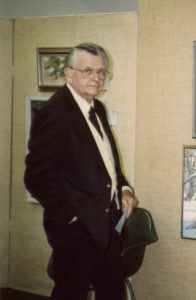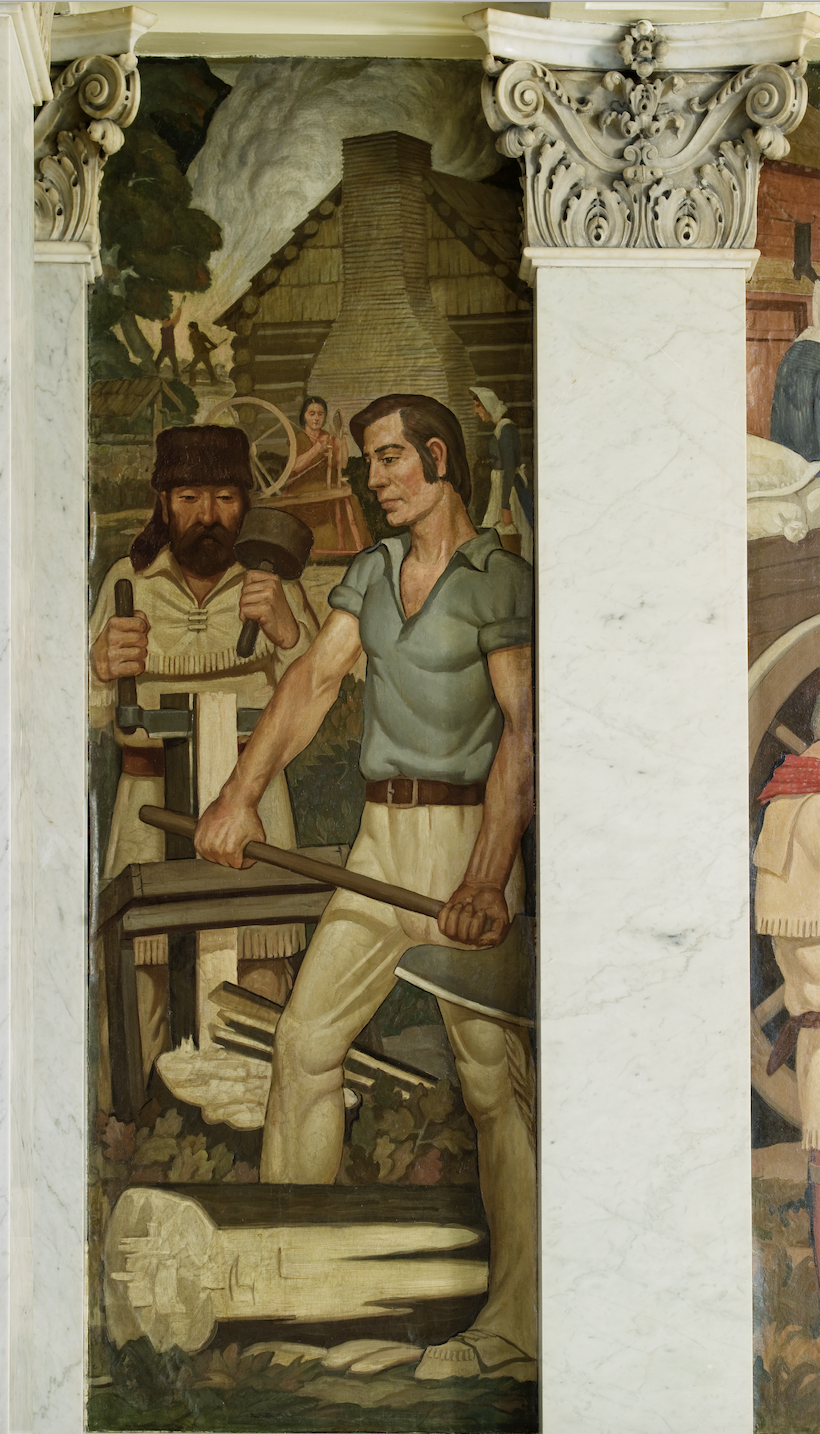
Photo info ...
Credit: Desert Rose via Find A GraveView Source
(July 17, 1911-May 21, 1989). Born near Edinburgh, Indiana, Grant Wright Christian graduated from the in Indianapolis in 1933. His instructors included , , , and Frank Schoonover. In 1933 and 1934 he continued his art education at the Pennsylvania Academy of Fine Arts in Philadelphia.

In the 1930s Christian’s art took on the Regionalist manner of painting, capturing the varied subjects of the “American scene” in his work. In the 1936 exhibition his painting, , won the Thomas Meek Butler Prize for Outstanding Landscape. Christian received federal commissions to paint the murals and for the old Indianapolis post office (now the Birch Bayh and Courthouse) in 1936, and the mural in the Nappanee, Indiana, post office in 1938.
During World War II, Christian served in the U.S. Army with the Film Strip Preparation Unit. In 1944, he won the premium prize for his “Clock of Tomorrow” design in a national competition sponsored by the Seth Thomas Clock Company. Following the war, he held commercial art positions in several advertising firms, retiring from the advertising business in 1981.
Christian continued his design work and painting in retirement, winning first place for his design of the entrance in 1969 and receiving prizes and purchase awards in three consecutive Hoosier Salon exhibitions for his canvases (1987), (1988), and (1989). Nationally, Christian’s exhibition venues included the Corcoran Gallery, Washington, D.C., the Grand Central Galleries, and the Whitney Museum of American Art in New York City.

Help improve this entry
Contribute information, offer corrections, suggest images.
You can also recommend new entries related to this topic.